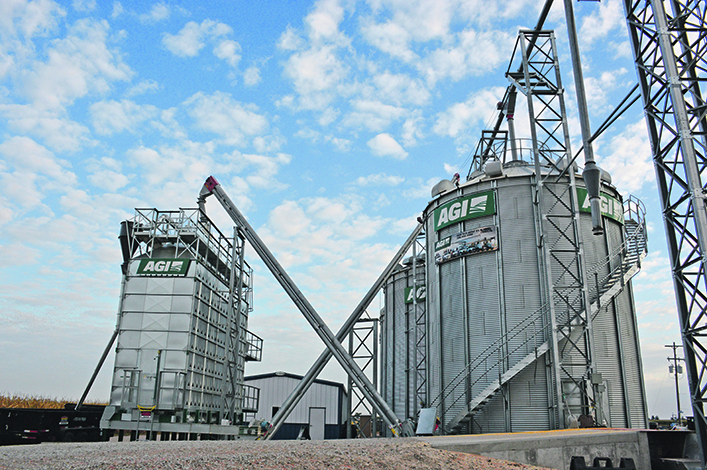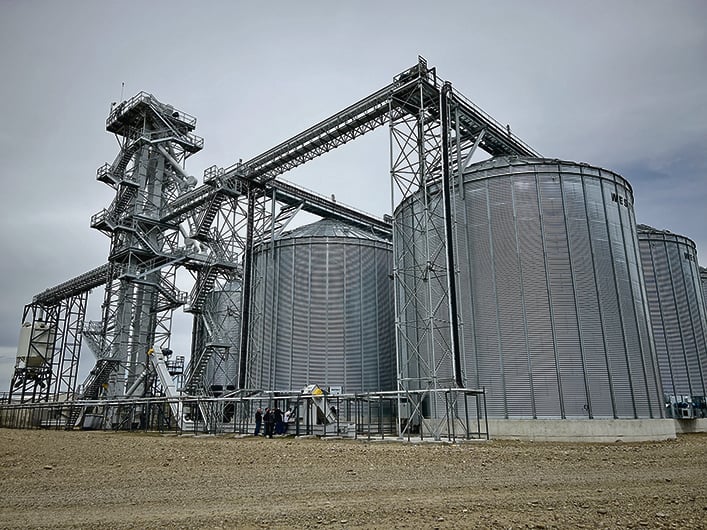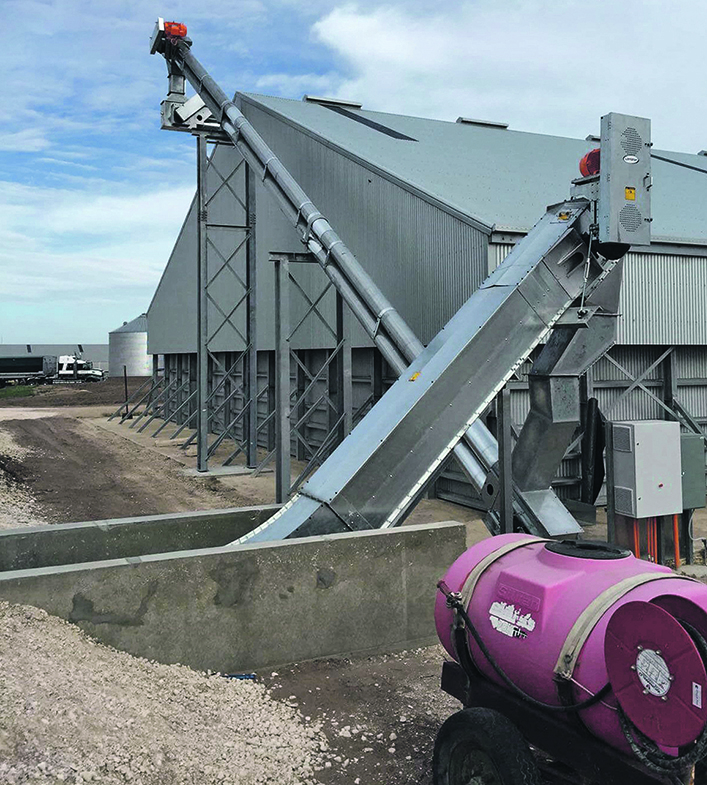How evolving demands around product quality, efficiencies and labour are influencing growers’ decisions on grain-handling systems
Western Canadian growers are rethinking their approaches to grain-handling systems, driven by the need to not only protect their harvests from damage during transport, but also to enhance overall productivity and sustainability on the farm.
Industry experts say they’re witnessing an increasing number of growers who have come to the crossroads of their existing systems, which are often too new to replace but also too small to efficiently handle current yields on their own.
“A lot of people used to buy with their pocketbook. They bought whatever they could afford without necessarily being mindful of future expansion,” says Ryan Deline, engineering manager at Lambton Conveyor, based in Wallaceburg, Ontario.
Read Also

Pork sector targets sustainability
Manitoba Pork has a new guiding document, entitled Building a Sustainable Future, outlining its sustainability goals for the years to come.
“Yet, the yield growth of many crops over the past 20 to 25 years has increased organically, and the systems have not kept up. So, what we’re seeing now is that these turn-of-the-century systems for 5,000 bushels an hour being repurposed by trying to bolt on 10,000 to 15,000 bushel receiving systems.”

Growers are also concerned about product quality.
Ron Kleuskens, a technical sales rep for Winnipeg-based AGI in Canada, says while western Canadian crops continue to be in high demand globally, the scrutiny they are under has increased.
“Depending on the crop, there’s some serious money involved. Any specialty beans that need to go overseas will be rejected if they are not pristine,” he says.
“Whether it’s Europe, Japan, Taiwan or South Korea, there’s always buyers looking for Canadian crops, but it needs to be the highest quality when it gets there. Unblemished is what it’s all about now.”
To this end, Deline highlights the growing emphasis producers are placing on equipment designed to prioritize the gentle handling of their product.
For example, pulses and specialty beans can experience significant attrition over time if they are hastily forced through conveying equipment, as well as crack and split if they are dropped from large heights into storage bins.
“A skirt conveyor off-style auger, for example, is the least gentle on your grain. It requires quite a bit of horsepower, and it wears out quicker compared to some of the permanent handling solutions that are available,” he says.
Many growers are instead opting for alternatives such as double-run conveyors due to their ability to better handle large volumes of grain with minimal damage.
Unlike traditional augers that use a screw-like mechanism to push the grain through multiple pinch points, the double-run uses a continuous loop of puck-like paddles attached to chains running inside two tubes — one forward movement and the other for return.
This design minimizes material degradation by reducing friction and pressure during transfer, allowing crops to be moved smoothly between locations without breakages that can occur with augers.
Kleuskens says the system is particularly effective for handling delicate crops such as pulses and beans.

“Because the paddles sit right on the bottom of the tube, there’s virtually no pinch points. It’s very gentle handling,” he says.
Double-run conveyors are also advantageous over designs such as flat-bottom chain conveyors, he adds, because they can span greater distances without needing additional support structures, making them a cost-effective solution for growers.
“Chain conveyors can handle those bigger capacities, but they need … some sort of support to hold them up between bins. That can be hard to do (when) … you have 50 or 60 feet between bins, which is why you then need support structures in-between” Kleuskens says.
“Double runs can similarly span 40 or 45 feet, but they’re much less expensive (because they don’t need those supports).”
Elevators have similarly come under the microscope.
Kleuskens says different designs with either continuous or centrifugal discharges and the speed in which they operate can have varying impacts on how they handle the bed of material.
“If all you’re doing is quickly throwing teacups down a spout, then there’s … the potential for it to just be smashing into the end of the cushion box, which is essentially a section of the elevator that retains a bit of the crop,” he says.
“But if you slow down the belt, you’re throwing small buckets down instead of teacups, and there’s less chance of it smashing up the (material) as it comes down the spout.

“You want it to run it at a speed that will maintain the quality of the product. If you end up smashing two to four per cent of the crop because of the way you’re moving the material around, you’re … going to be penalized for that. So, the idea is (to) minimize any damage to the crop from the transferring system.”
In general, Deline is seeing more western Canadian growers adopt more permanent grain loop systems to facilitate future demand.
Unlike traditional setups that rely heavily on portable augers, which require constant repositioning and manual labour, the loop is a more constant and continuous conveyor system that facilitates a seamless transfer of grain between storage bins.
The added benefit to permanent grain loop systems is they also reduce the demand for workers who are increasingly hard to find these days, as well as the time spent on handling, which is often problematic during traditionally tight harvest windows.
“Harvest is a very short season, or you want to make it as short as possible. You want to get it out of the field and secure it as quick as possible,” says Deline.
Most permanent systems can be operated by just one person, he adds, and are equipped with monitoring technologies that allow for real-time data collection and analysis that growers can use to make informed decisions regarding the storage conditions and movement schedules of their crops.
Deline says permanent systems can also reduce the amount of labour required to move transfer augers, especially with larger crops.
“It might be fine if you’re doing specialty crops or seed where they’re much smaller total bushels, but when you get into big acres of canola, wheat, corn or soybeans, where you just want to combine all that grain, larger grain bins are much more cost effective for your crop,” he says.
“At that point, putting in permanent handling really makes sense so you can avoid moving all those transfer augers around.”

















